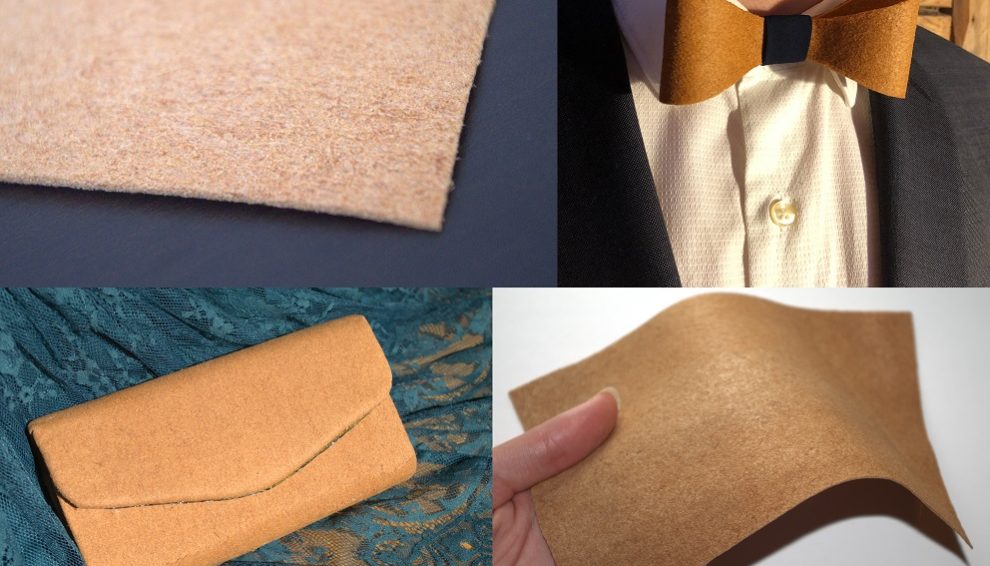
30.10.2018

Mari-Ann Meigo and Märt-Erik Martens are planning to produce an innovative material that resembles natural leather, but is significantly more sustainable. The majority of the world’s leather is chrome tanned and producing one square metre of leather needs 5 000 litres of water. The Gelatex leather, however, only requires 65 litres. More importantly, unlike the incredibly toxic method of tanning the leather, their leather making process only involves natural materials.
Mari-Ann and Märt-Erik first studied the background of producing natural leather. Märt-Erik remembers that their findings did not make them happy at all. “We found that leather production brings tremendous amounts of pollution with it. Chemicals seep into the clean drinking water – one square metre of leather uses 2.4 kilograms of chemicals. Some of them stay in the leather, the rest of them are discharged into the seas of the world. Our leather needs no chemicals and the main raw material, gelatine, is produced by animal by-products, like bones, skin and sinew, which are currently simply incinerated in Estonia.”
Both founders of the company agree that Gelatex must reach the stage of mass production. Though large scale production tends to pollute the environment, Mari-Ann believes that the current system could also be made more sustainable. “Could mass production be changed in such a way that it would have no ecological footprint? Right now, you can’t use sustainable materials in large scale production because we are not able to produce them in big enough quantities. However, as long as people consume meat, we will have enough material. At the moment, 25% of raw materials of animal origin go to waste – they are either burned or buried,” she explains.
Märt-Erik dispels the myth that sustainable materials are more expensive. “Price-wise, the clothes manufacturer also wins because our material is cheaper. The consumer and the environment can also enjoy the benefits of this – fake leather wears out very quickly, but the degradation of fake leather takes centuries. Our material degrades relatively quickly,” he adds.
Webpge: Gelatex
Photo: Gelatex
Sustainable consumption and production is about promoting resource and energy efficiency, sustainable infrastructure, and providing access to basic services, green and decent jobs and a better quality of life for all. Its implementation helps to achieve overall development plans, reduce future economic, environmental and social costs, strengthen economic competitiveness and reduce poverty.
At the current time, material consumption of natural resources is increasing, particularly within Eastern Asia. Countries are also continuing to address challenges regarding air, water and soil pollution.
The Sustainable Development Goals are the blueprint to achieve a better and more sustainable future for all.
Read more about SDG 12 – Responsible Production and Consumption
This publication has been produced with the financial support from the Nordic Council of Ministers. The content of this publication is the sole responsibility of the coordinators of this project and do not necessarily reflect the views or policies of the Nordic Council of Ministers.
Kommentaarid